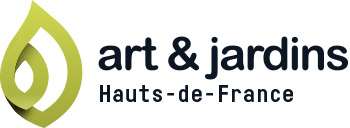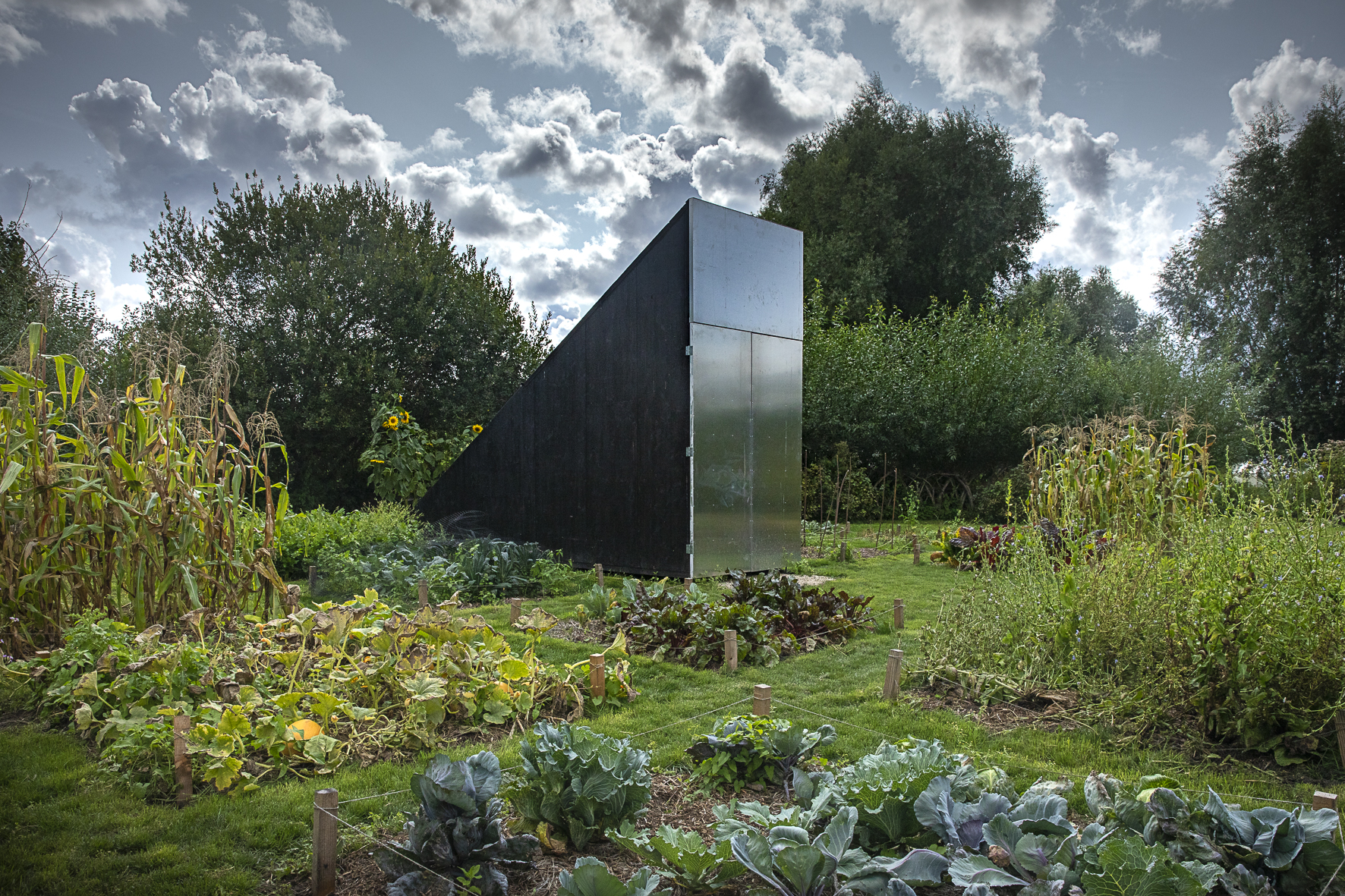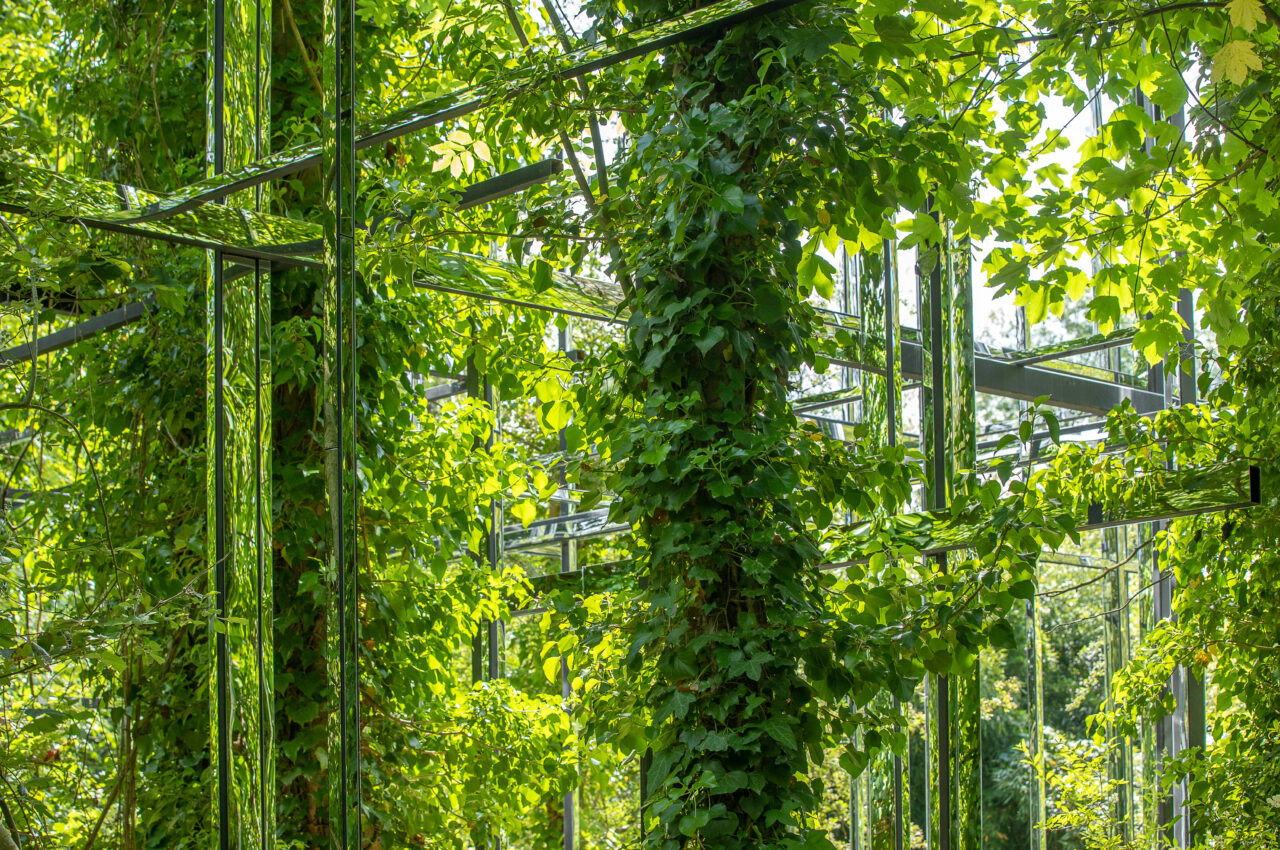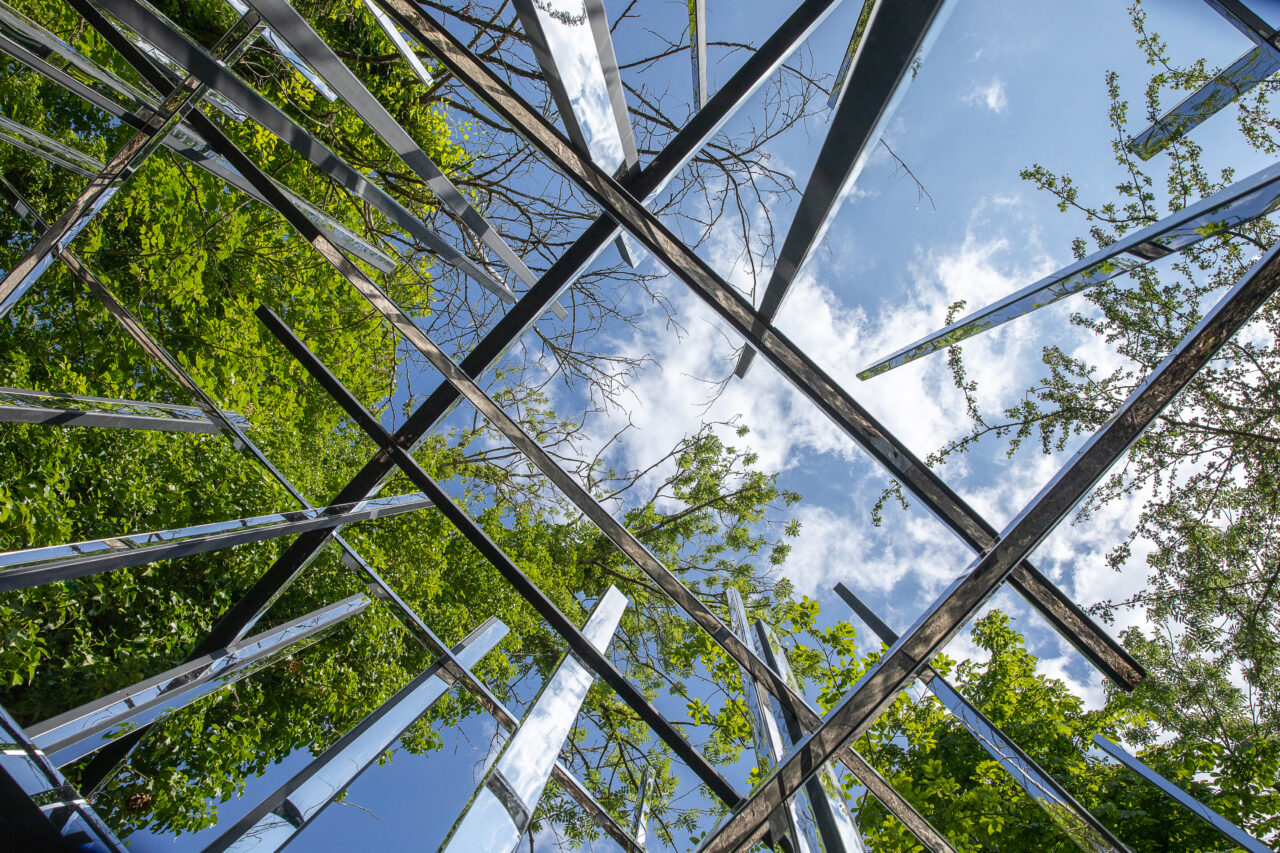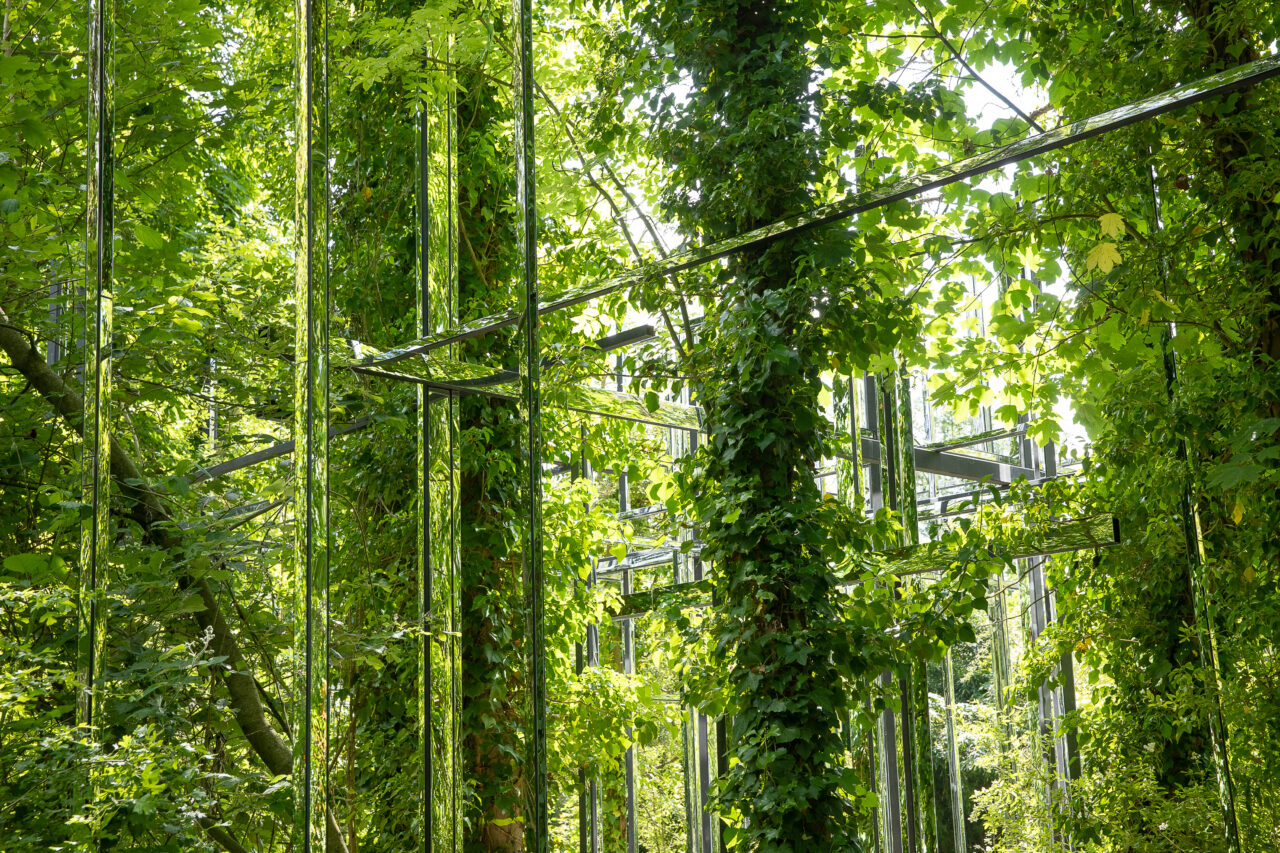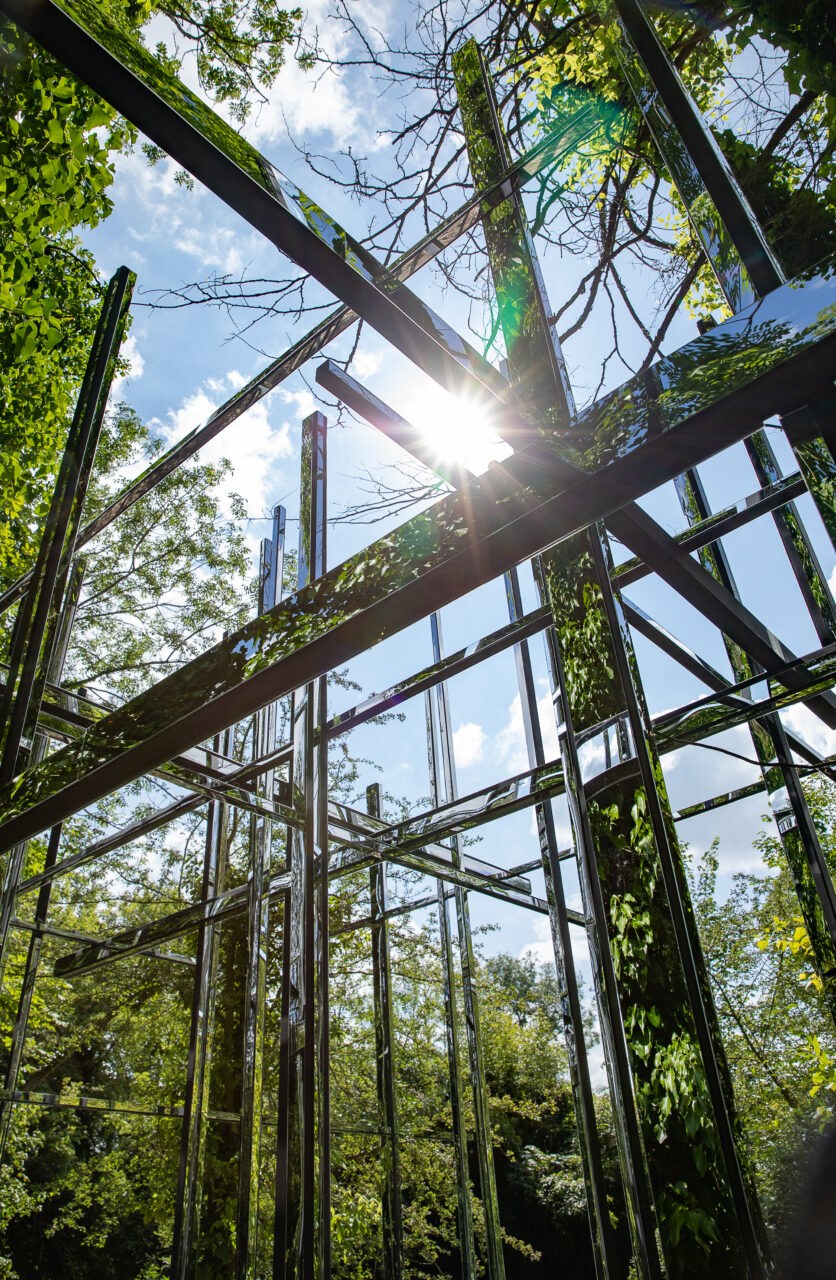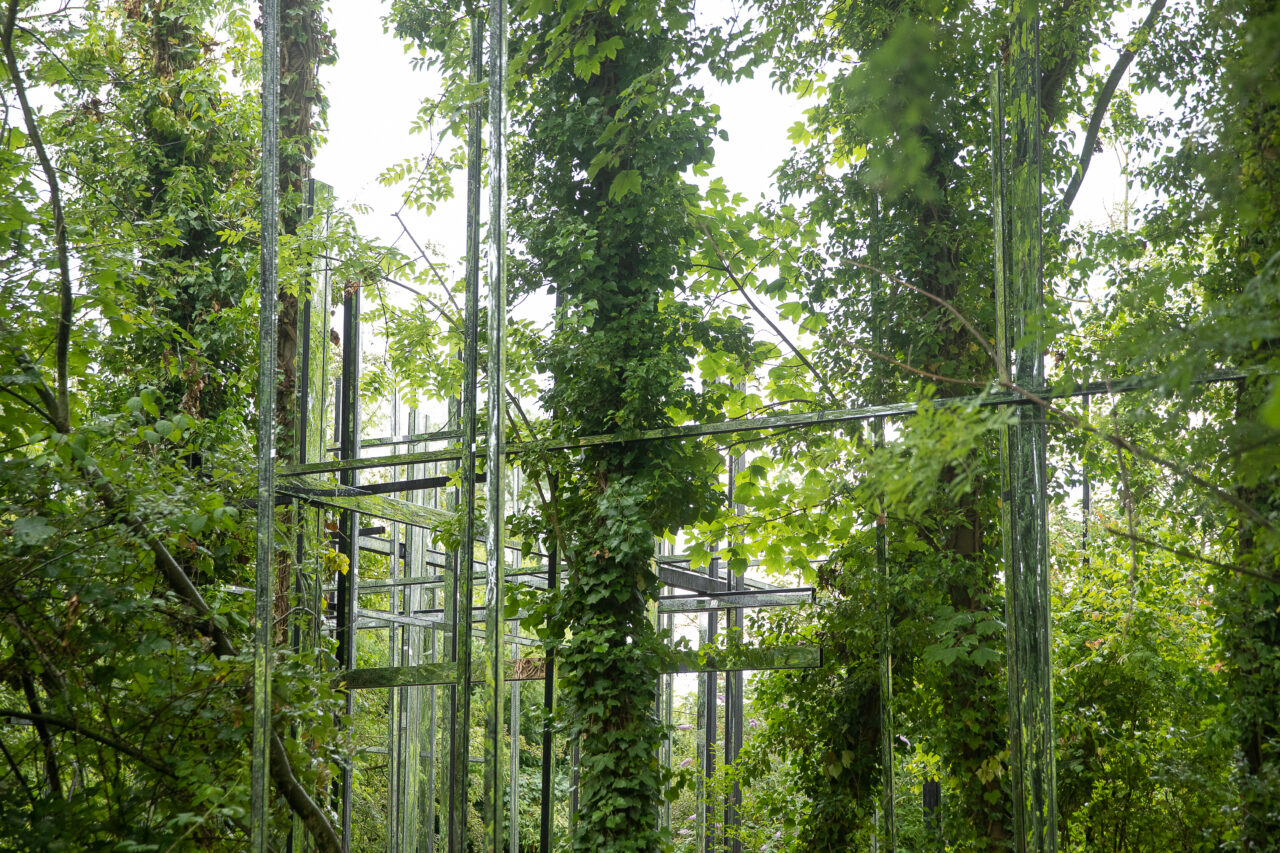With the aim of transforming the landscape into an image using kaleidoscopic games, this landscape sculpture will be installed at the confluence of the Petite Avre and the Somme, on Verdun street in Amiens. A labyrinth of glass, a birdcage of light, and a mirror cage where 1000 reflections settle and colonize the material, this proliferating structure opens like a multitude of magical portals onto the archipelago of the Hortillonnages gardens, creating a mirage in the landscape of the banks of the Somme.
The artistic project creates a series of mirages, a deception of reality, and kaleidoscopic games. Intrigued, one begins to see a sort of slight shift in the landscape, as if one image were sliding over another. Light colonizes the material, 1000 reflections settle and carve out gaps through which the gaze and imagination rush. The sculpture is a magical gateway that opens onto the archipelago of the gardens. Inside, as one enters under and into the sculpture, one experiences a labyrinth of glass, a birdcage of light, or a reflection cage whose exit is not always obvious.
Between nature – preserved, idealized, and restored – and us, the sculpture. Crossing the perceptual threshold of the sculptures is to embark on a journey into a self-stable, proliferating, and shimmering structure that seems to emerge from the ground. Floating geometries seem to emerge from the texture of the landscape: these are apparitions that depict an ongoing process: the invasion of the Hortillonnages archipelago by structures. Is it a process of crystallization? Is it a single rhizomatic organism or one with underground hyphae whose emergences will only be seen here and there?
At some point, the optical illusion occurs, and the landscape is transformed into an image. Through visual perception, through optical illusion, one can no longer differentiate between what is reflection and what is seen through the direct impression of light on the retina. Framed by mirrors, the landscape becomes a reflection of itself, an image.
The work escapes its object status. It appears as a mirage on the banks of the Somme. The sculpture tapers along its contours and blends into the landscape. It cannot be detached from its context; the form cannot be separated from the background. More surprisingly, we will see the landscape itself dissolve, be drawn in. With the mesh of their net, the structures of the sculpture pull the garden landscape towards them. In the air, the mixture of the three-dimensional orthogonal frame of the sculpture with the picturesque undulations of the Hortillonnages gardens causes an optical reaction, a formal combustion.
The artist
(Français) Gilles Brusset

